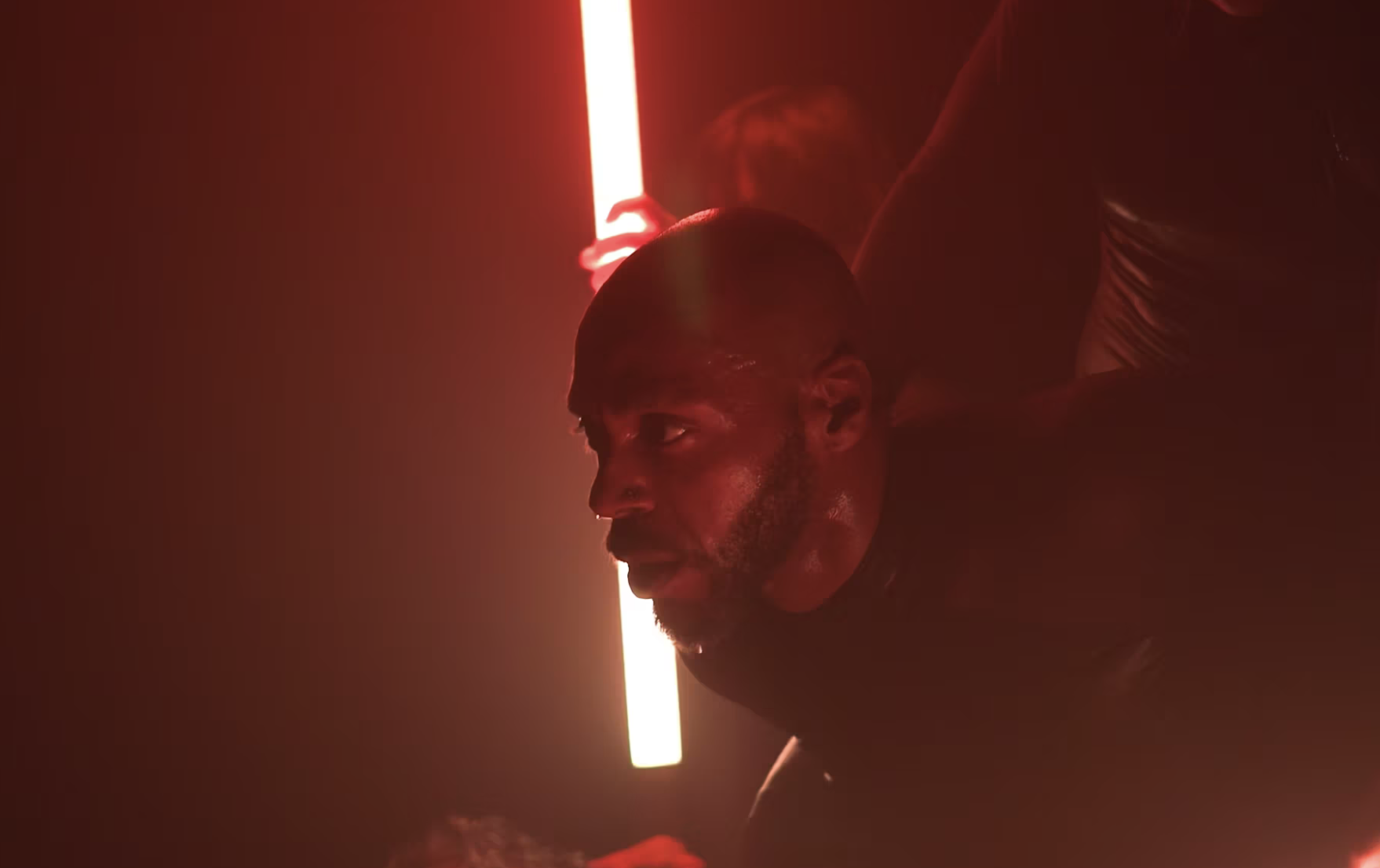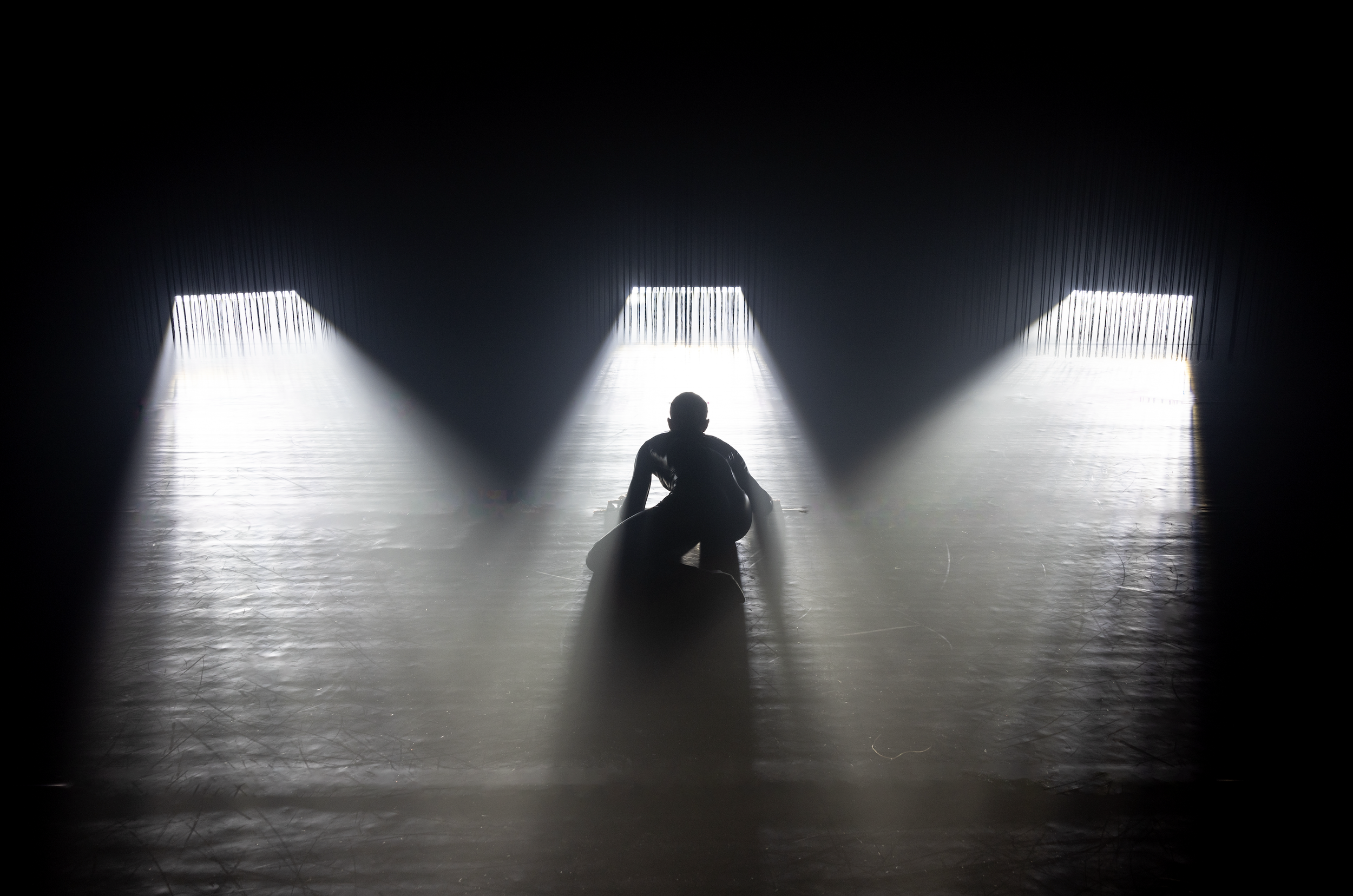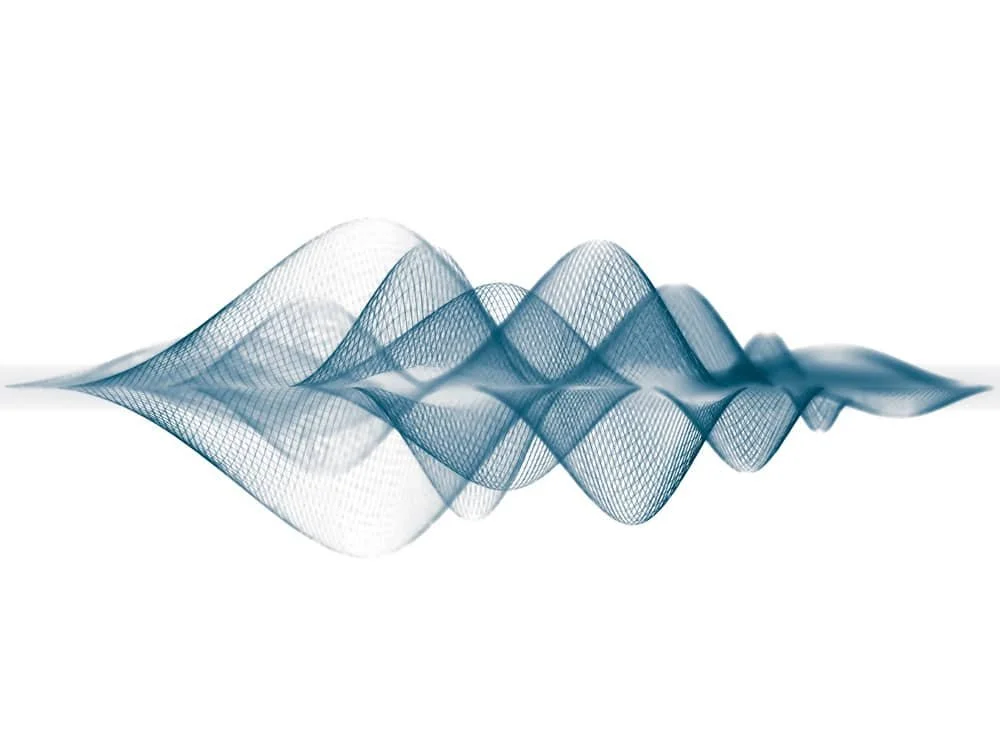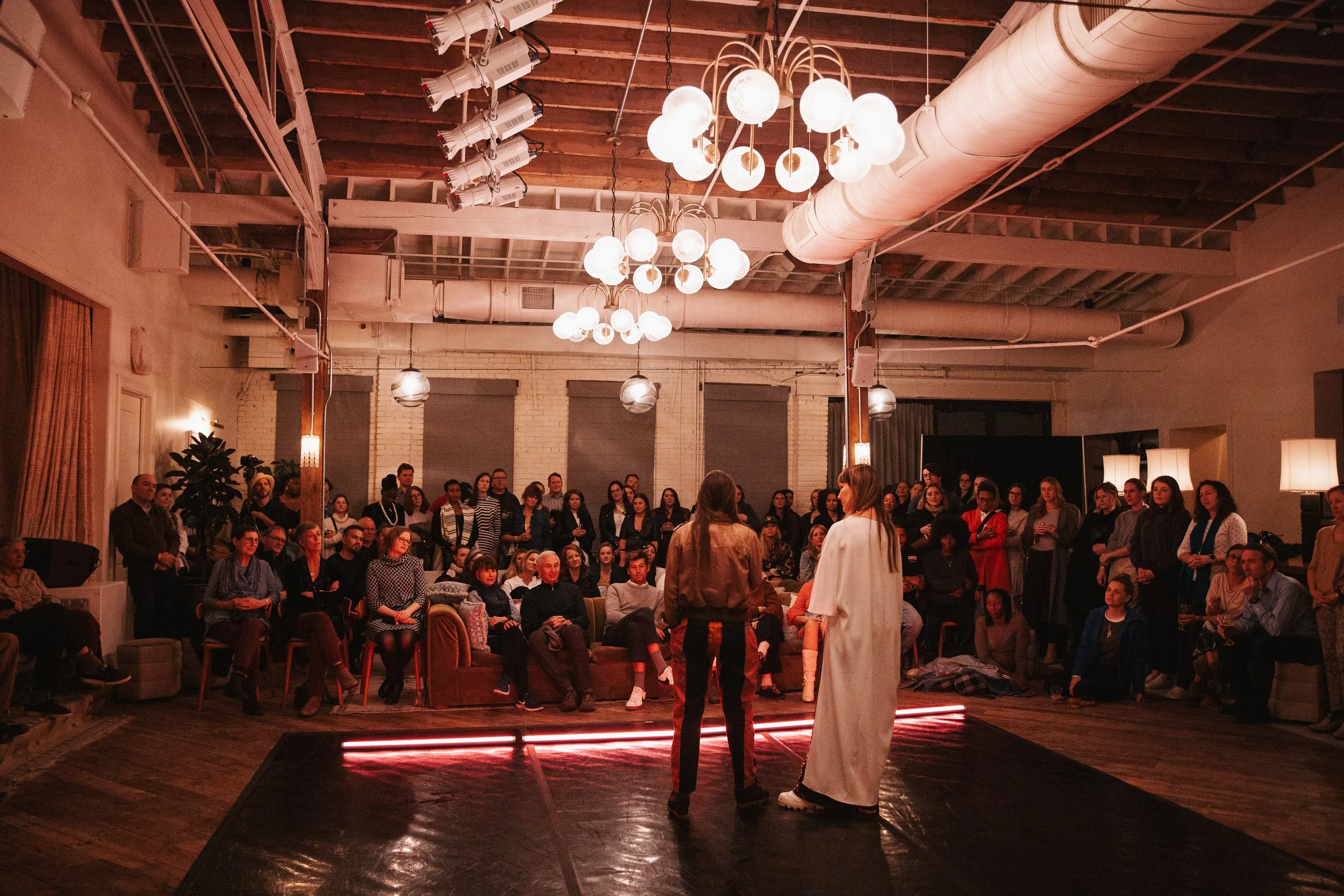“Spectacular in every sense of the word.”
- Mark Murphy
founder of On the Boards, first executive director REDCAT, current executive & artistic director OZ Arts
21 Yeses is a dance of light and void,
a theatrical form
of sensory perception
that soothes and mesmerizes audiences
as it awakens into a luminous hyperdream.
Taking on the tech-aesthetic of a space odyssey, New Dialect plays with hi-grade electricity, the presence of absence, and the geometries of choreography to encounter light as a sentient form of movement and darkness itself as an action, a vast stillness.
Combining the practice of contemporary dance with lighting technologies borrowed from the concert industry, choreographer Banning Bouldin and production designer Michael Brown (Bon Iver) create an experience where motion and light capture and release one another inside an endless distance.
“Astounding…the choreography, lighting design, and dancing were all absolutely stunning.”
- Jennifer Turner
CEO of Tennessee Performing Arts Center
“An evocative, ever-shifting dreamscape that is fascinating to watch.”
- Amy Stumpfl
NASHVILLE SCENE
C R E D I T S
commissioned by
TRACEY FORD
Tracey is a principal/owner at EOA Architects and a lover of dance. She and our associate producer, Tonya Lewis, first approached New Dialect in May 2023 to discuss the possibility of hosting an event during Nashville Design Week. Their invitation to dream and scheme led directly to the creation of 21 Yeses.
Taking their prompt, we made a short study based on the notion of dancers creating their own lighting design in real time.
On 2 November 2023, we performed the work-in-progress at SoHo House Nashville and did so again during the 10th anniversary of OZ Arts in April 2024.
By that point, plans had been made to expand the work into an evening-length theatrical production under the direction of production designer Michael Brown.
Tracey Ford
executive producer
Banning Bouldin
choreographer + lighting designer
Michael Brown
production + lighting designer
Teten
creative producer
Tonya Lewis
associate producer
cast & collaborators
Madison Brott
Lenin Fernandez
Emma Morrison
Shabaz Ujima
costumes
Katrina Huckerby
residency host
Kathryn Wilkening
Centennial Performing Arts Studios
Investors
South Arts
Scott Chambers
Ed Lanquist Jr
The Danner Foundation
EOA Architects
Karin & Robin Eaton
Sharon & Doug Pugh
Rick Hoos
Manuel Zeitlin
South Arts & the National Endowment for the Arts & Tennessee Arts Commission
provided grant support for the theatrical production and educational outreach.
Tennessee Performing Arts Center & New Dialect
co-produced the tech residency and theatrical premiere.
premiered
22 - 24 November 2024
S O U N D T R A C K
-
Himitsu
FenneszHer
V.I.V.E.K
Window Seat
Portico Quartet
Ikigai
NikNak
Curveball
Manu Delago
Shiosai
Philip Glass & felix taylor
7 Mile Boots
Danny Scrilla
Luminous Beam
Portico Quartet
New Air
Ariel Kalma, Jeremiah Chiu & Marta Sofia Honer
Call of the Void
Exist Strategy
Distant
NikNak
A R T I C L E
-
TALKING WITH BANNING BOULDIN ABOUT THE NEW ‘21 YESES’
BY Amy Stumpfl
We often think of lighting as something of an add-on in an onstage performance — a design element that helps guide the eye while illuminating and enhancing the performers. But with the upcoming premiere of New Dialect’s 21 Yeses, those elements are actually built right into the choreography itself.
It’s just the sort of innovative work that drives Banning Bouldin, who founded New Dialect in 2013. Her goal has always been to help build a more robust contemporary dance ecosystem in her hometown. As the company’s artistic director, Bouldin has created a host of imaginative new works. But in recent years, she’s been particularly drawn to working with tangible objects and materials that both support and inspire her choreography.
“I haven’t been this excited since I made The Triangle five years ago,” says the Nashville native and Juilliard graduate, who has garnered national attention for her contributions to the dance world. “I learned so much from that process — that’s really when I started using functional objects in unconventional ways, creating sculptural formations and lifelines between the dancers. So I’m really happy to keep pulling threads from that practice forward into 21 Yeses. Not only that, but the objects in this case are being used to cast light and to generate the visual effects for the work.”
It all started when Tracey Ford, a principal/owner at EOA Architects, approached Bouldin about the possibility of creating a dance installation for Nashville Design Week. A longtime dance lover, Ford had seen The Triangle at OZ Arts, along with Neon Nights — an immersive installation Bouldin created with New Dialect in 2021 that featured lighting concepts from Michael Brown, a Nashville-based production designer known for his work with Bon Iver.
“When Tracey asked if I would be interested in making something for Nashville Design Week, I was honestly terrified,” Bouldin says. “You know — terrified in the way that, as an artist, you know you’re right on the edge of your competency. It’s a good kind of terror, but still.
“My creative producer partner and I had been talking about how much we’d loved working with Michael Brown, and all that we’d learned from him as a production designer in the concert industry. So my partner said, ‘What if we take those wireless LED tubes that you see at concerts, and use them in your choreography?’ That was it — I couldn’t wait to jump in.”
Bouldin gathered a team of dancers and set up an experimental rehearsal environment that focused on how the LED tubes might best be utilized — from building the choreography to having the dancers create their own lighting design in real time. Together they created a 20-minute piece for Design Week that premiered at Soho House Nashville in November. A second performance took place as part of OZ Arts’ 10th Anniversary Bash in April.
“It was such a fascinating moment of reveal for us,” Bouldin says. “Looking at the way these LED tubes could impact the choreography, and then using the choreography to cause the lighting design — we realized that we were blurring the line between dance and design. The use of light and darkness, the shifts in coloration and intensity — it was so evocative. Audiences were really moved, but said it also felt very meditative. Over and over they said, ‘I just wanted it to keep going.’”
Heeding that call, Bouldin decided to expand the piece to an evening-length theatrical production under the direction of Michael Brown. Co-presented with the Tennessee Performing Arts Center, New Dialect’s 21 Yeses will premiere Nov. 22 at TPAC’s Johnson Theater. The project is funded, in part, by a grant from South Arts, in partnership with the National Endowment for the Arts and the Tennessee Arts Commission.
In choosing to present the work in TPAC’s intimate Johnson Theater, Bouldin says she hopes audiences will feel like “they’re inside the dream.”
“It feels like this incredible space odyssey, but instead of watching the visual effects happen to the dancers from a distance, we’re hoping audiences feel like they’re part of the journey. The design is meant to evoke sensation, and I think dance composition does the same thing when you’re wielding it well. But we’re also playing with things that dance doesn’t normally play with here — that feeling of being at a concert or club, being inside the visual effects. I think that blurring of lines offers a neat point of engagement for audiences.
“I’m so excited for this work to have its world premiere here in Nashville,” she adds. “When I first started New Dialect, so many folks from the dance field were like, ‘You’re going to try that in Nashville?’ So the fact that we’re in our 11th season — that we’ve been met with so much support, and the dance community has grown so much over the last decade — is just amazing. I feel really proud to be working in this city, and to be sharing this piece with Nashville first.”
I N S T A L L A T I O N
test run of 21 Yeses at SoHo House Nashville during Nashville Design Week 2023
photo: Daniel Meigs
-
#16 by APHEX TWIN
on Selected Ambient Works, Vol. II
Legacy Drift by AQUAIMO
on Legacy Drift - Single
Piano Un1 Arpej by APHEX TWIN
on Computer Controlled Acoustic Instruments, Pt. 2
Luminous Beam by PORTICO QUARTET
on Art in the Age of Automation
Window Seat by PORTICO QUARTET
on Portico Quartet
Don’t Let Them Clip Your Wings by ROLOWHIPP
on Learning How To Dance EP
I N T E R V I E W
The interview below appeared in a special edition magazine published by Nashville Design Week during the weeks leading up to the theatrical premiere of 21 Yeses. photo: Daniel Meigs
-
Intro by Nashville Design Week:
Rewinding back to 2023, Tracey Ford of EOA Architects and Banning Bouldin of New Dialect teamed up to submit a proposal for a Nashville Design Week event. Their proposal, which we enthusiastically accepted, leaned into the idea of dancers creating their own lighting design in real time.
Later that year, their R&D installation was unveiled at Soho House during Nashville Design Week, and from there the project grew into what became an evening-length theatrical production called 21 Yeses.
Nashville Design Week invited Banning back to share the story of how it all began and what the future holds for 21 Yeses.
Jayla Jackson - Can I start by asking, where does the name New Dialect come from?
Banning Bouldin - That’s a great question. So philosophically for me, dance and language are inextricably linked. I believe that all movement is body language, and that new movement languages and dance styles can be created when we share our own body languages and influences with each other. When individual dancers come together to improvise and as a group choose to repeat specific physical choices, this process over time contributes to the creation of new movement dialects. So the name New Dialect refers to this search for body languages. It’s a search for many new dialects, not just one.
Jayla - What got you into this kind of dancing? Because, of course, it sounds like a step up from your average form of contemporary dance.
Banning - I wouldn't say it’s a step up necessarily. I know many contemporary dancers around the world who are investigating their own improvisations, what their movement style is, and what contributions they’re interested in making through collaborations with other like-minded artists. For me personally, as both a dancer and a choreographer, I want to create and curate environments with other dancers who also like working collaboratively, and who are interested in research and experimentation. In the case of 21 Yeses, for example, I am actively researching the intersection of kinetic sculpture, lighting design, and choreography with a team of four dancers.
Jayla - What drew you to the addition of lights? That's what I'm really curious about, because that's fascinating. I’ve never seen anything like it before your “Design for Dance” event last year.
Banning - I had never seen anything like it before either, ha ha.
We have the great advantage with New Dialect of knowing many wonderful artists across the fields of dance, design, and production. My creative partner, Teten, and I have a great relationship with a production designer, Michael Brown, who does a lot of lighting and visual effects design for bands like Bon Iver, the National, and Death Cab for Cutie. He comes from a totally different world than we do and uses entirely different instruments and fixtures for productions than what we typically use in theatrical contexts.
We first had an opportunity to collaborate with Michael a few years ago to create an outdoor installation at Cheekwood. It was such an elucidating process for us we knew we wanted to work with Michael again. So when Tracey Ford and EOA Architects approached us with their interest in supporting us to create an event for Design Week, immediately, Teten and I were like, “How can we take what we learned from Michael and use this as an opportunity to expound on my interest in working with functional objects sculpturally, but in a way that also creates the lighting design?” It was a real culmination of different relationships and ideas that we had been marinating on together for a few years. Design Week was the right time and context for us to implement them. Bringing in these wireless LED tube lights that are remotely programmable really encouraged me to expand on my history of using different physical materials in sculptural ways, and added a whole new dimensionality to that research with the lighting design.
Jayla - For sure, and let's dive a little bit into that. Could you just tell me about your “Design for Dance” event for NDW last year and how that experimental show led to being on a bigger stage now?
Banning - So Tracey Ford and EOA Architects have been hugely supportive. Tracey's a big dance lover, and I've always felt really supported by her. She's an architect, very involved in Nashville Design Week, and she also sees, in my choreography, a real interest in architecture and sculpture design. She's the one who invited us to create something for Design Week. We also have a wonderful partnership with Metro Parks and Recreation, and they provided a studio residency for us to experiment with the technology of wireless, remote-controlled tube lights to see how we could choreograph the movement and the lighting design at the same time, to see if the dancers could, in effect, create their own light.
After we got great feedback from the first installation at SoHo House, we started thinking, how can we amplify the experience that we were having by drawing in more concert lighting design elements to further erase the line between audience and performer? So we talked to South Arts, a regional arts funder, about the possibility of expanding this work, and they were really excited about the idea. We reached out to Tennessee Performing Arts Center because their president, Jennifer Turner, is doing such wonderful things to promote dance and the future of dance in our city. It was really just the confluence of some wonderful partnerships that allowed us to transform a Design Week installation at SoHo House into an evening length production at Tennessee's largest performing arts theater.
Jayla - That's incredible. What pre-production challenges are you facing or forsee facing?
Banning - I have a fluency in working with lighting design elements that are more traditional for theatrical stage environments. So it's been a big learning curve understanding concert lighting design elements and trying to figure out which fixtures are going to make the most sense in this non-traditional context that we're pulling them into. Typically concert lighting design elements are used in these huge arena-style environments, and so it’s a creative challenge to pull them into the smaller scale of a black box theater, to use such powerful tools in such an intimate space.
Jayla - Without, of course, giving away too much, what can your audience expect to see during 21 Yeses at TPAC this fall?
Banning - Audiences can expect a full sensory experience. The show is an odyssey of sorts, so it has all the variations of an odyssey. There are deeply calming moments where everything grows quiet, where darkness grows into a vast stillness that feels almost luxurious. And there are moments of intense brilliance, moments where the light and sound and the motion of the dancers seem to perfect each other. We really hope at the end of it everyone comes away feeling like they know what 21 Yeses means, like they've experienced a kind of pleasurable meditation.
P O E M
21 Yeses exists in fourteen scenes.
The topography of those scenes was inspired by Hannah Emerson and her poem
“The Center of the Universe,” which reads as an invocation to act, to react, to be, and to be again.
CENTER OF THE UNIVERSE
by Hannah Emerson
Please try to go
to hell frequently
because you will
find the light there
yes yes — please
try to kiss the ideas
that you find there
yes yes — please
try to get that
it is the center
of the universe
yes yes — please
try to help yourself
by kissing the hot hot
hot life that is born
there yes yes — please
try to yell in hell
yes yes — please
try to free yourself
by pouring yourself
into the gutter all
guttural guttural yell
yes yes yes — please
try to get that you
become the being
that you came there
to be yes yes — please
try to go to the great
great great fire that you
created because you
become the light
that the fire makes
inside of you
yes yes — please
try to kiss yourself
for going there
yes yes — please
get that you are
reborn there
yes yes — please
begin your day
21 Yeses is brought to you by




































